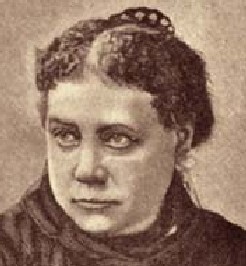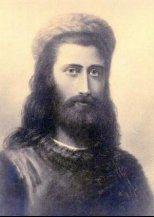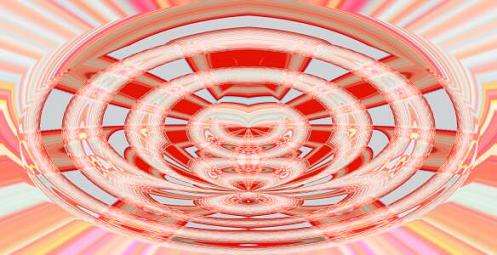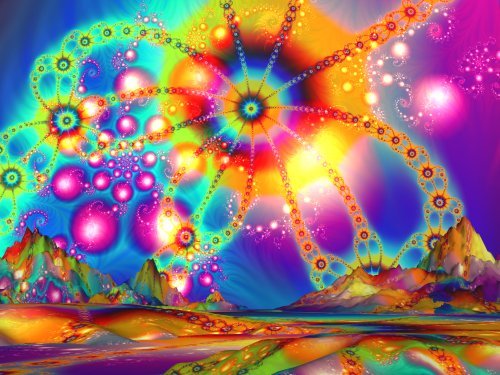
Alice A. Bailey

H. P. Blavatsky
 Alice A. Bailey |
BLAVATSKY, BAILEY AND THE NEW AGE! |  H. P. Blavatsky |
The third largest “faith group” in the US, consisting of about 20% of the population, a fraction that has remained remarkably stable from the 1980s through the 2000s, is the so-called New Age Movement. It is a somewhat unlikely religious affiliation, with no popes or pastors, and no well-defined set of “core” beliefs. Instead, New Agers tend to retain their original, usually vaguely Christian beliefs and pick out specific New Age enthusiasms that they might feel “comfortable with” or have curiosity about. Among the standard New Age belief sets are astrology; angel communication; the Atlantis mythos; the aura; the chakras; all forms of medical quackery from acupuncture and aromatherapy to homeopathy, magnet therapy and theraputic touch; psychotherapy; numerology; crystal and pyramid power; feng shui; ghosts and hauntings; all forms of fortune telling from tarot cards to channeling; spiritualism; reincarnation; etc., etc., etc. But in fact almost any topic in pseudoscience can be considered at least borderline New Age: alien abductions? Sure. Near-death “experiences”? Sure. Out-of-body experiences? Certainly! The Bermuda Triangle? Possibly. Crop Circles? For sure! Intelligent Design? Absolutely! Any “paranormal” topic is a potential New Age topic.
This completely heterogeneous set of unrelated enthusiasms, none having any basis whatsoever in fact or reality, owes its origins mainly to two remarkable women and one remarkable man. The two women were Helena P. Blavatsky (1831 – 1891) and a sometime follower, Alice Ann Bailey (1880 – 1949); the male was Edgar Cayce (1887 – 1945), also strongly influenced by Blavatsky. Much has been written about Blavatsky and Cayce, so here we'll concentrate on the more obscure Alice Bailey.
 Is it Koot Hoomi or Djwhal Khul? Either way, it's a Mahatma!  |
Alice Bailey was born in England on June 16, 1880. Her father was an engineer but she was mainly interested in religion, and became a Christian missionary in India. Although Blavatsky's science-fictional religion of Theosophy then had its world headquarters in India, Bailey did not encounter it there; she married a soldier-turned-minister in 1907, and the two wound up in America. Bailey's marriage ended in divorce, and she found a new enthusiasm, Theosophy, but not for long. By the late 1910s, Bailey was paddling her own canoe, having borrowed for her own exclusive use a Theosophical Mahatma (one of the Theosophical supermen who ran the world from a secret stronghold somewhere in Tibet), namely Djual Khool. Bailey basically sat down and founded her own religion, a muddle of Theosophy, Christianity and astrology, expounded in nearly-unreadable “sacred texts” which she “channelled” from the imaginary Khool, whom she perhaps wisely renamed Djwhal Khul. In 1920 she married another former Theosophist, Foster Bailey, and together they organized the so-called Arcane School, which has had numerous offshoots and descendants. New Agers who need to refer to sacred texts usually refer to the writings of Bailey and Blavatsky, and to books collecting the stream-of-consciousness “trance babbling” of hillbilly psychic Edgar Cayce. It is Bailey who seems to have been the first to use the term “New Age,” although it also appears in more mainstream Theosophical writings at about the same time. Bailey's was far from the only 20th Century offshoot of Theosophy. |
The most direct roots of the New Age lie with the so-called Counterculture that swept college campuses during the 1960s. The prevailing elements of the Counterculture were a hatred and distrust of science, as a shamelessly servile part of the evil Establishment, and a deep interest in all “maverick” ideas, particularly those of pseudoscience and occultism. By the early 1970s students and former students were sufficiently familiar with the esoteric ramblings of Blavatsky, Bailey and Cayce to be legitimately called New Agers; the term was not widely used in the press until the 1980s, but it has firmly stuck since. The novels of Thomas Pynchon, who was an english major at Cornell in 1959, a bit too early for the Counterculture, but who managed to absorb thoroughly the Counterculture and New Age whilst living in California in the late 1960s and through the 1970s, almost completely incorporate all aspects of the New Age mythos— see any of his novels from V. (1963) through Against the Day (2006)— plus, they're very funny! [Be warned that the sentence you have just read is a typical Pynchonesque sentence!]
Like its inspiration, Theosophy, the New Age movement's beliefs are a complex and extraordinary mixture of religion, science fiction, and pseudoscience. Among the religious or quasi-religious teachings often present within the lore are an identification of God with the universe itself and all living things within it; a belief in the soul and its reincarnation through many lives; and faith in a coming age of total transformation in which all worthy humans will have developed godlike supernatural powers and the ability to enter other universes and dimensions. A more general summary of New Age beliefs is here. Also closely related to New Age beliefs is the synthetic religion of Wicca, pieced together by Gerald B. Gardner (1884 – 1964). New Agers who want to try their hands at “casting spells” usually rely on some Wicca spell handbook purchased at the same store where they found their Tarot card decks and healing crystals. As for the vehement anti-science stance characteristic of areas as diverse as the New Age, religious fundamentalism, and Postmodernism, it's now to be found just about everywhere, particularly in colleges of education, in the US and in England.
For further reading:
Note that almost all books and websites I have located with titles like Understanding the New Age, etc., etc., are written by Fundamentalist Christians who consider the New Age and essentially all of pseudoscience to be a Satanic plot to seduce college students away from the simple “truths” of Sunday School! This can be a bit confusing, since they also usually consider all of science and mathematics to be a similar Satanic plot, despite the fact that New Agers dislike science and math as much as do Fundamentalists.
 |
 |
New Agers notoriously have their own “art,” which looks suspiciously exactly like the Psychedelic Art of the 1960s and 1970s, and even their own music, spacey tinkles and ethereal chords apparently always to be done on a synthesizer.